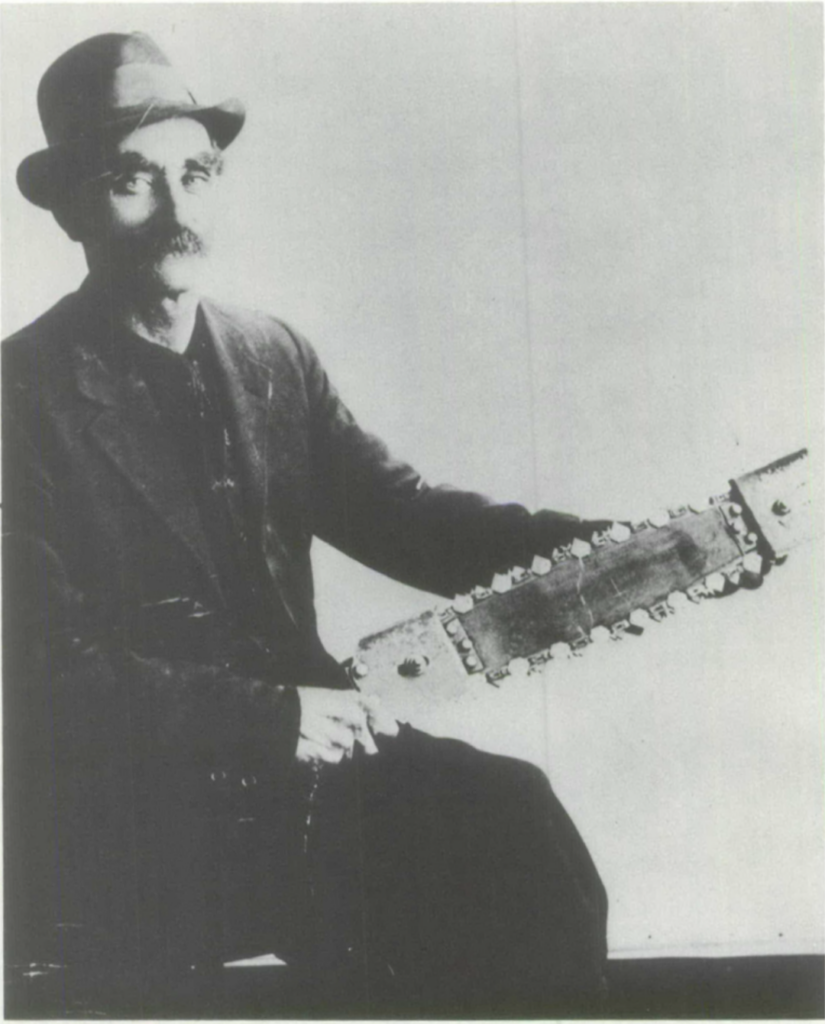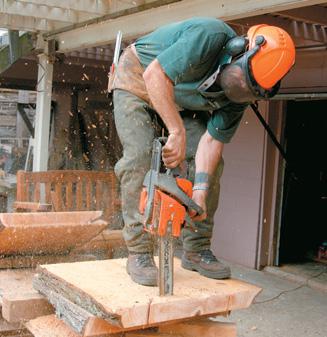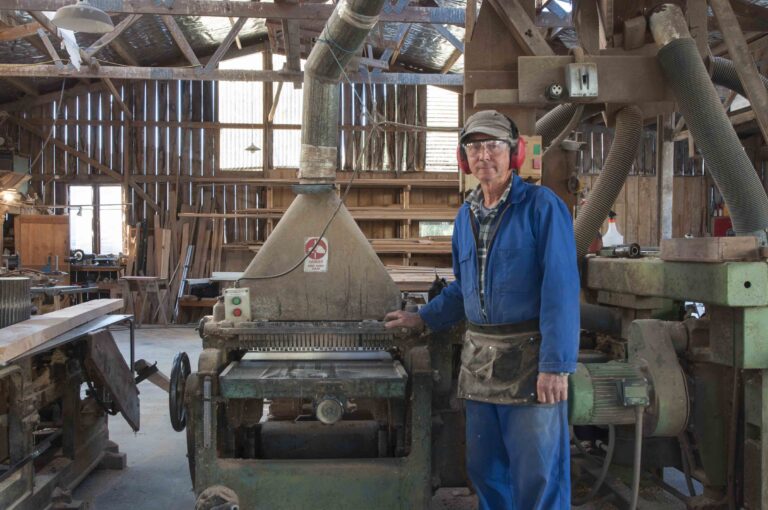This South Island sawmiller is sought after for bespoke timber products, created using chainsaws
By Sue Allison
Photographs: Juliet Nicholas
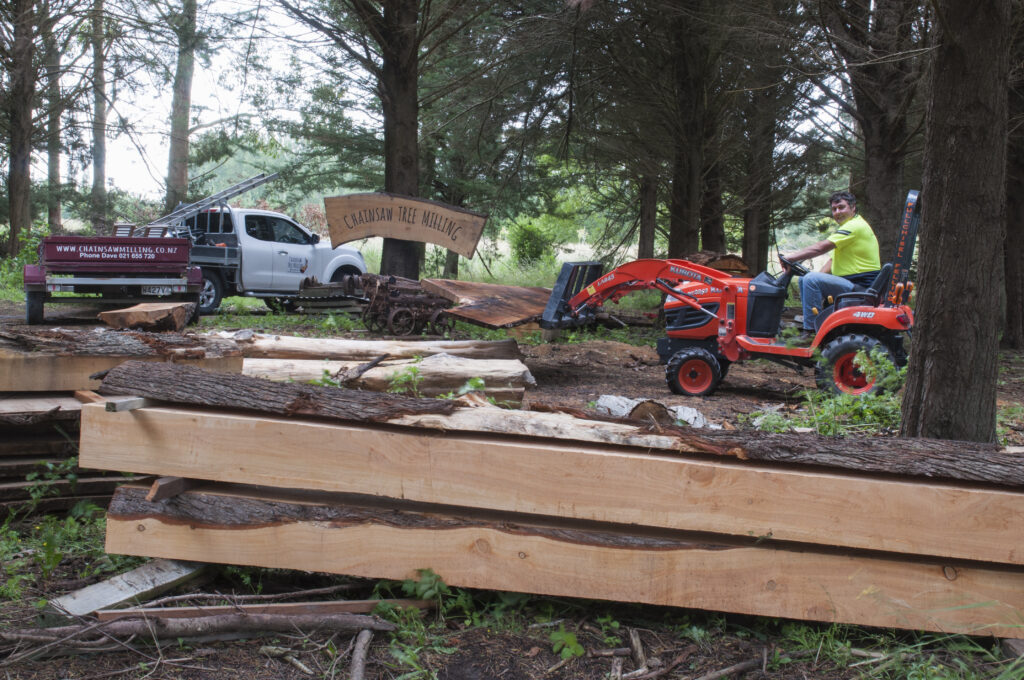
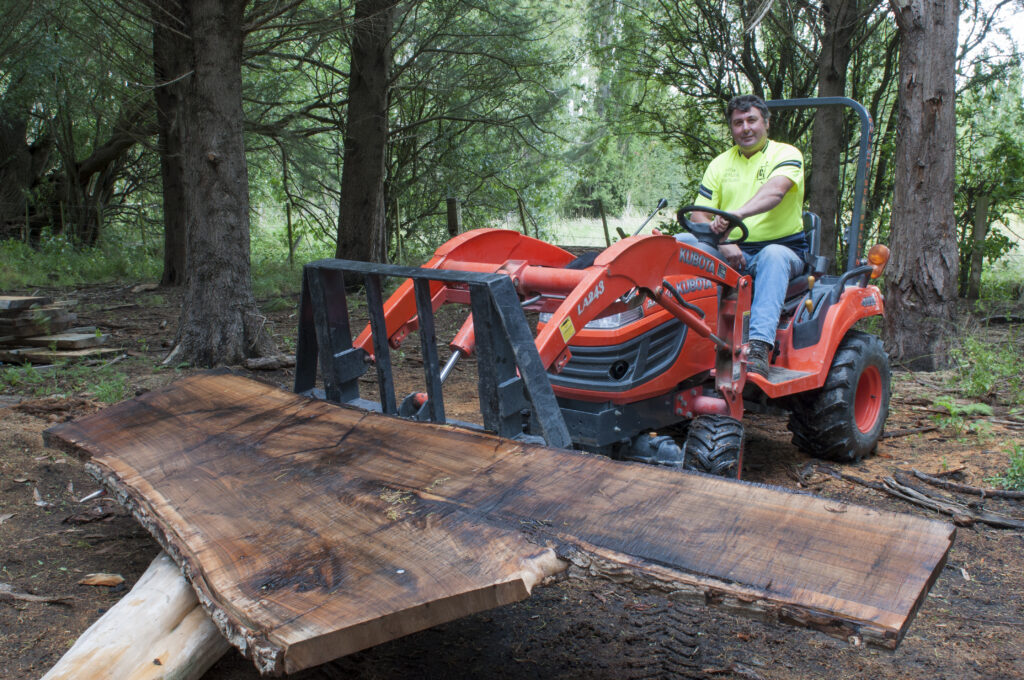
Sentimentality and chainsaws don’t usually go hand in hand but Dave Neame uses the machines not to massacre but to preserve pieces of wood for posterity.
The long-time logger, who is based in North Canterbury, uses his prowess with a chainsaw to mill trees into slabs that can be turned into furniture, kitchen benches, or used as building features.
“I get approached by people who’ve got trees that have sentimental value and they want more than firewood or mulch out of them. I come and mill them up and they can get made into something that becomes a family heirloom.”
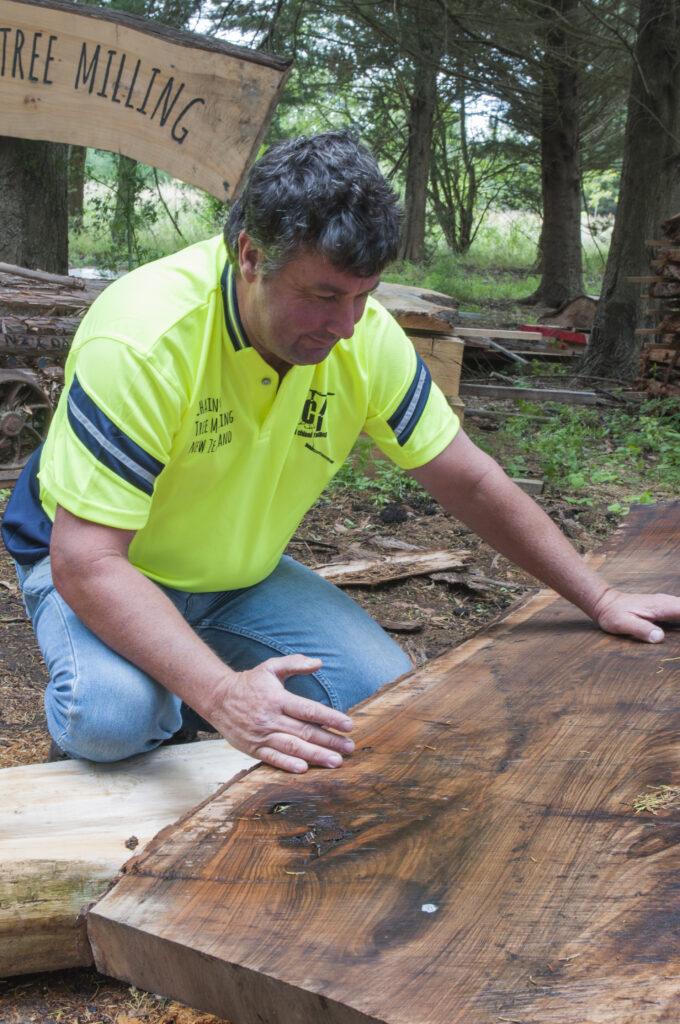
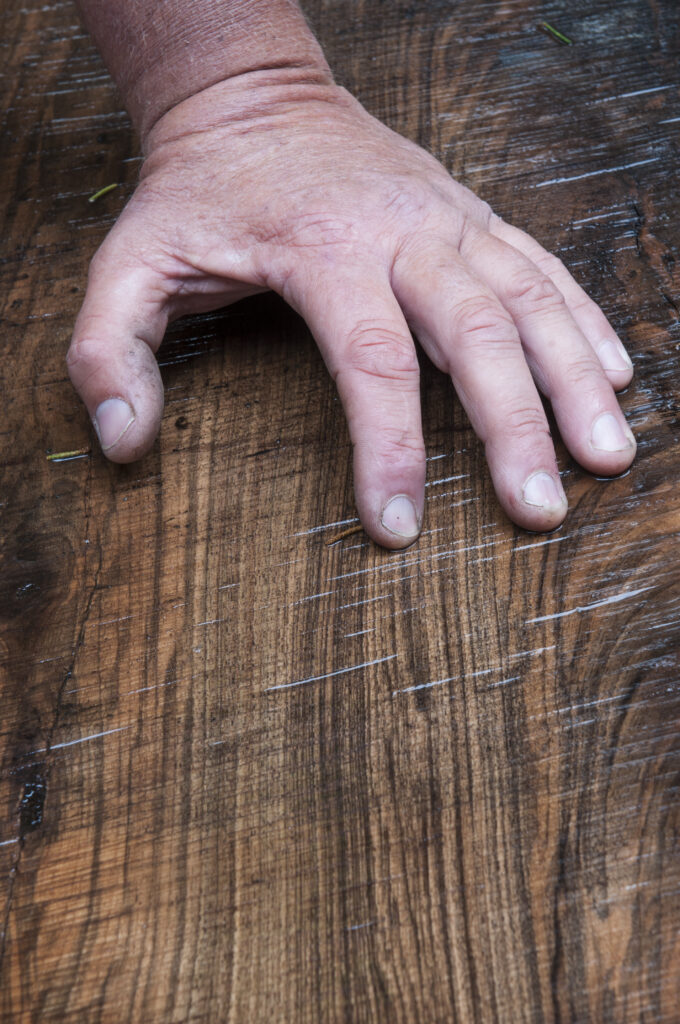
Dave’s gear
Dave’s mobile mill comprises a Kubota tractor and three chainsaws, which he carts around on a trailer behind his Nissan Safari. “That’s my shed. I can take it all round the country.” He stores his gear in a container in Okuku, but has a semi-permanent set-up for bespoke milling in a macrocarpa grove on a friend’s property in nearby Ohoka. A sign nailed high on a tree declares it to be “Dave Neame’s Thinking Forest” and, clad in leather chaps and earmuffs, he is probably the only one who can think above the roar of his saw.
Dave has three chainsaws. His “baby saw”, which can cut up to 500mm, is a 92cc Stihl MS 661 C-M, a fuel-efficient saw with an impressive power-to-weight ratio. His big double-end saw, which has a maximum cut of 1.45m, is an Alaskan Mill Mark III. “It was designed for milling in remote places. It needs two people so I usually get my client to help.” His third contraption is a vertical saw, also known as a saw fish, which has been engineered to cut at 90° to the horizontal.
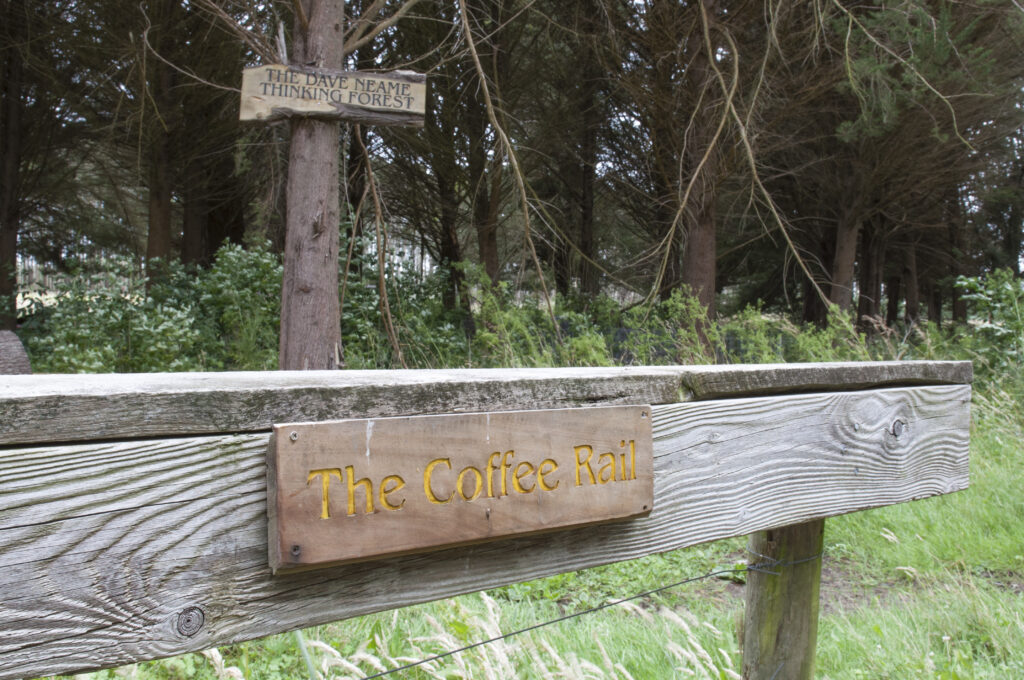
Old walnut myths
Dave works with a variety of wood, from elm and oak to macrocarpa and windfall natives, but his favourite is walnut. “It always comes up the nicest,” he says of the hardwood fruit timber with its distinctive grain and rich colours. But it has a drawback: “I hit nails all the time with walnut. There was an old myth that the more iron you put into a walnut tree, the more fruit it would bear so they banged nails and even horseshoes into them. That’s why sawmills won’t touch it.”
Nails aside, sharpening the teeth is a tedious part of the job and the chains have a limited life. “I have to sharpen the saw after every slab on a big cut. It takes me about two minutes with a hand file. I’ve sharpened so many I could do it with a blindfold,” he says. “The chain gets hot and deteriorates quickly with continuous cutting like this, so I’ll only get about two weeks out of a chain.”
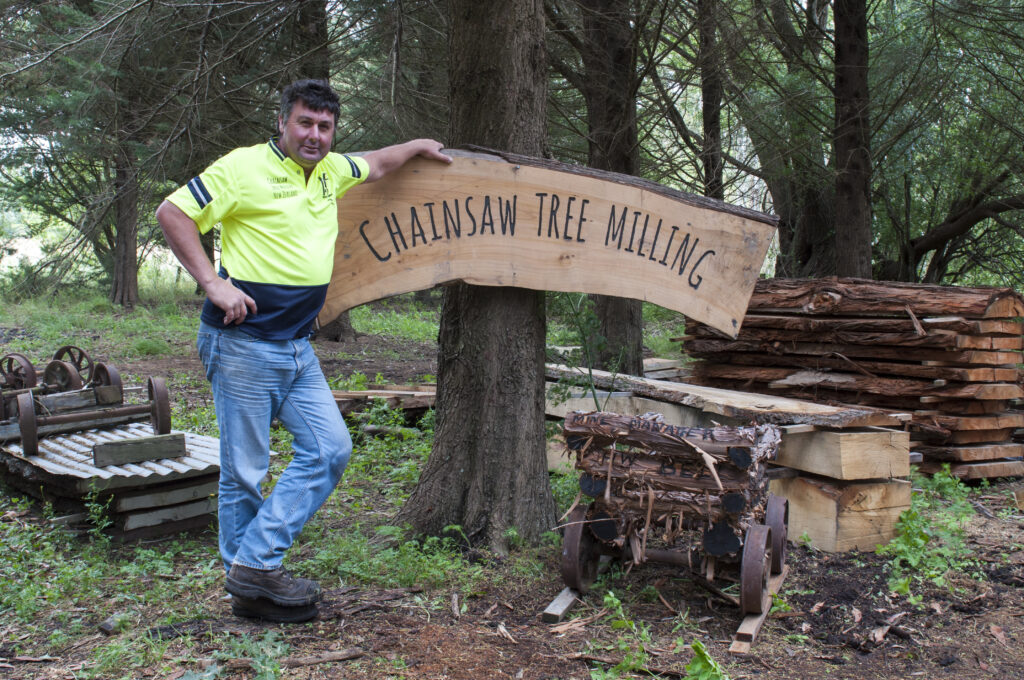
Process
Dave uses a standard 3.6m aluminium ladder as his guide, bolting it to the timber to be milled with two coach screws. His smallest horizontal saw, a Stihl MS 661, is connected to an adjustable steel frame that allows it to be set to the depth of the cut. The frame slides along the top of the ladder while the blade cuts below it. Wedges are banged into the end and along the length as cutting proceeds to prevent slumping. An oiler has been fitted to drip on the saw tip. Most slabs are cut to around 40-50mm. Hardwoods, like this walnut, can be sliced thinner while macrocarpa lends itself to a chunkier cut. “This little log is worth $1000 milled,” says Dave. “It’s shocking that timber like this is used for firewood. People don’t realise its value.”
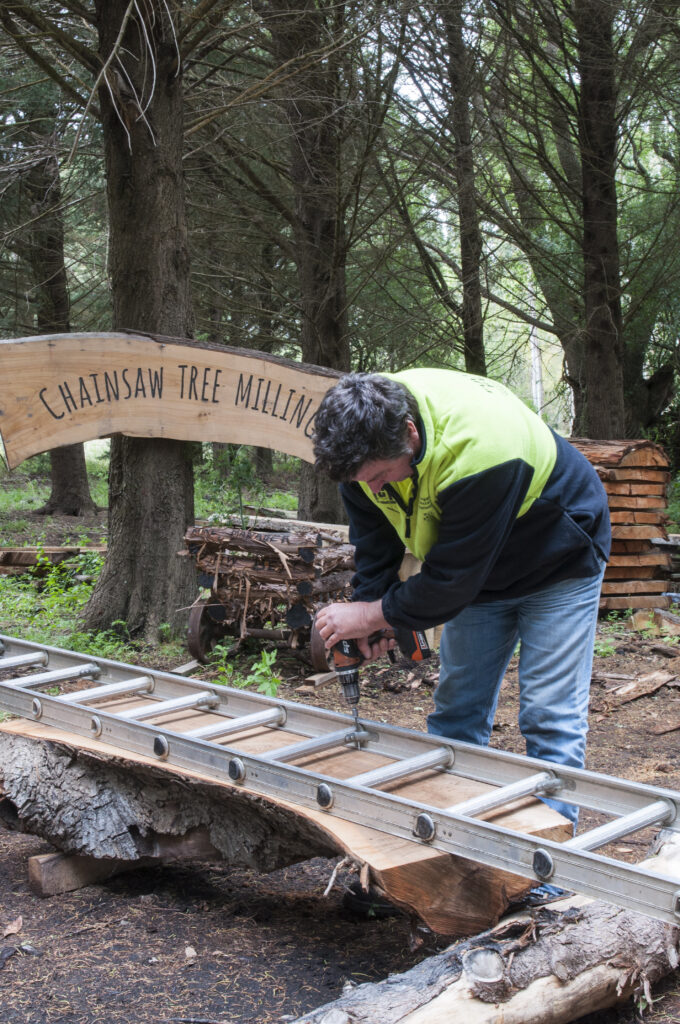
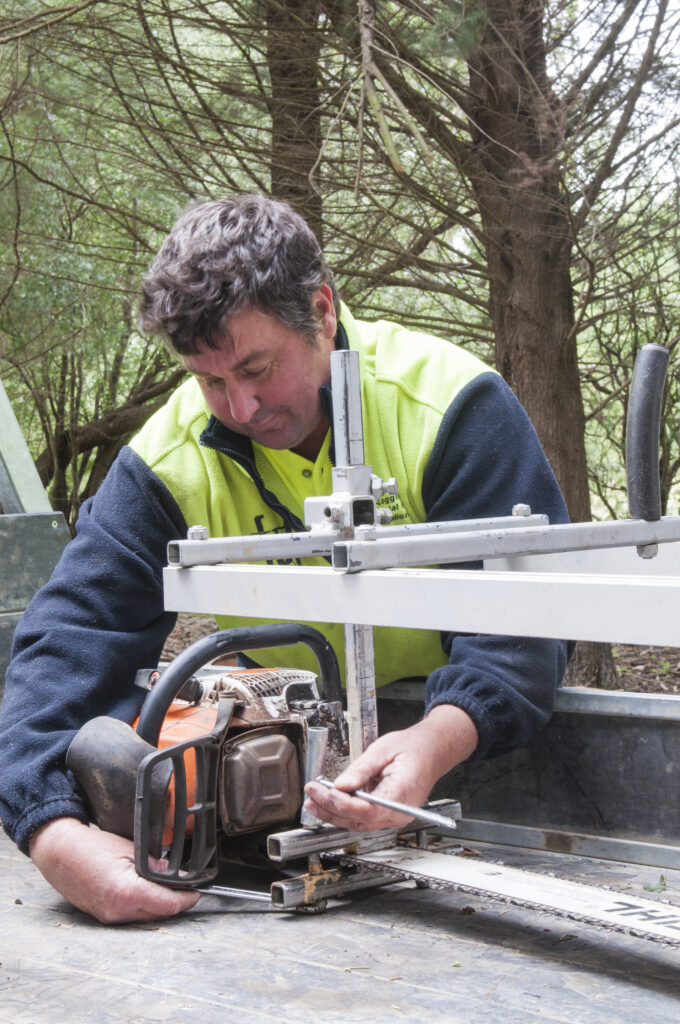
In the blood
Dave, born in Greymouth, comes from a family of West Coasters with an affinity for the forest. “My grandad started milling in 1950 at Jacksons doing silver pine for sleepers for NZ Railway. It was all done by hand with two-man crosscut saws in those days.”
His father, a bulldozing contractor from the Taramakau, also loved his wood. When he died two years ago, Dave had a piece of 600-year-old rimu he had heli-logged from the area made into his urn box.
Dave cut his teeth logging in Nelson before taking to the air heli-logging. It was dangerous work and while retrieving pine in the Motueka area, the helicopter crashed and burned, killing the pilot, Peter Jones. Dave, who was lucky to have just got out of the machine, milled matai for his headstone.
He then headed to the North Island to do some native timber contract work before being called up by Hokitika-based Forever Beech in 2004.
“I did all their sustainable heli-logging from Nelson Lakes up the Howard Valley through to Maruia.” In between logging contracts and private tree felling, Dave started dabbling in one-off chainsaw slab work about 12 years ago. It proved so rewarding that he decided to turn his hand to it full-time and set up Chainsaw Milling NZ in 2016.
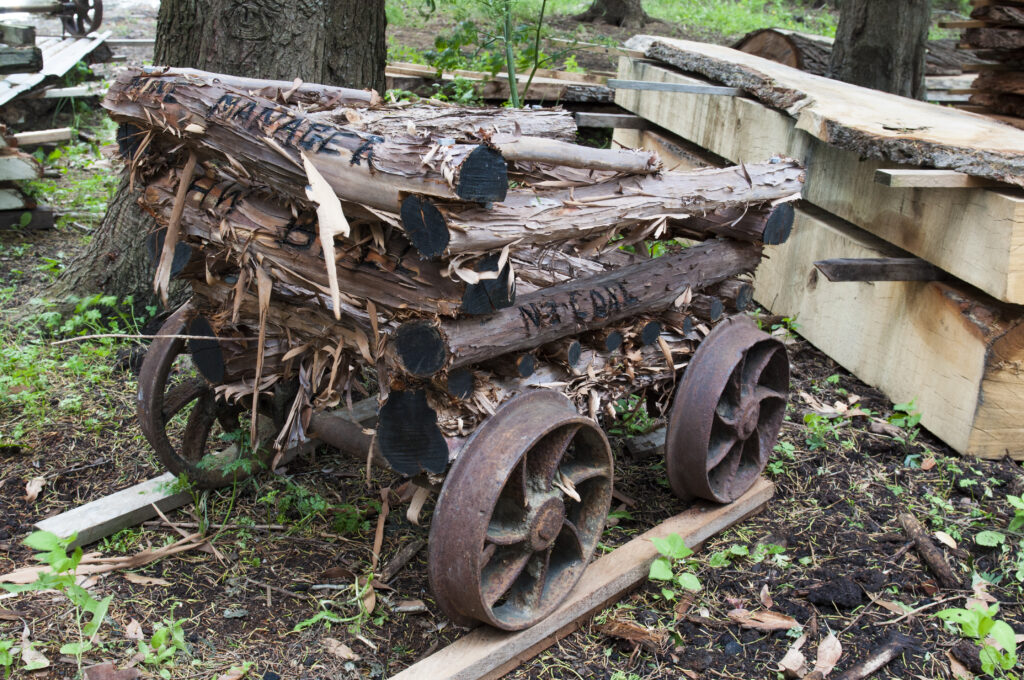
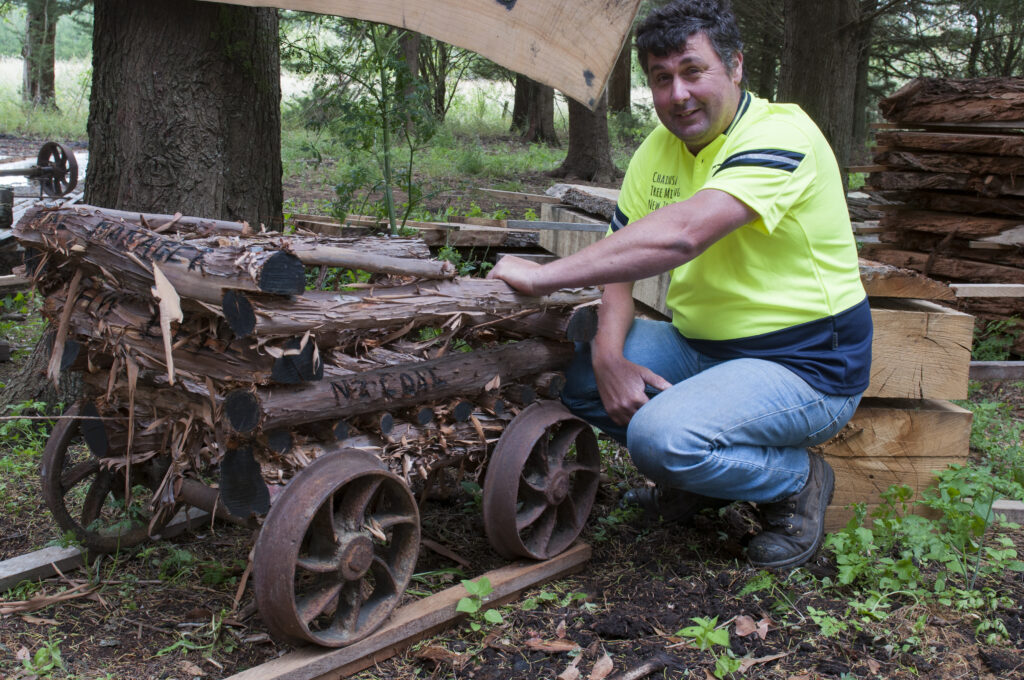
Drying out the timber
Dave’s forest is full of stacks of timber, drying naturally in the elements. The drying time depends on the type of wood and the thickness of the slabs – the rough guide being a year per inch. Dave recently milled 50 slabs from a 90-year-old walnut, timber that will now sit for seven years before it can be used. “Old timers on the Coast told me to leave hardwood in running water for 12 months to flow the sap out,” says Dave, but he hasn’t tried it.

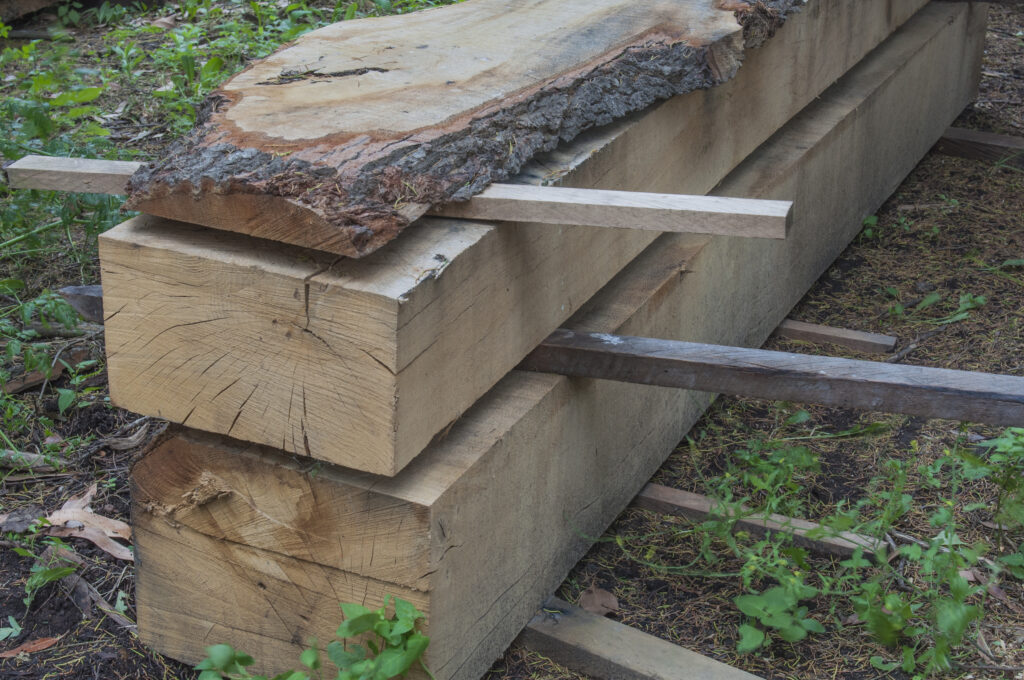
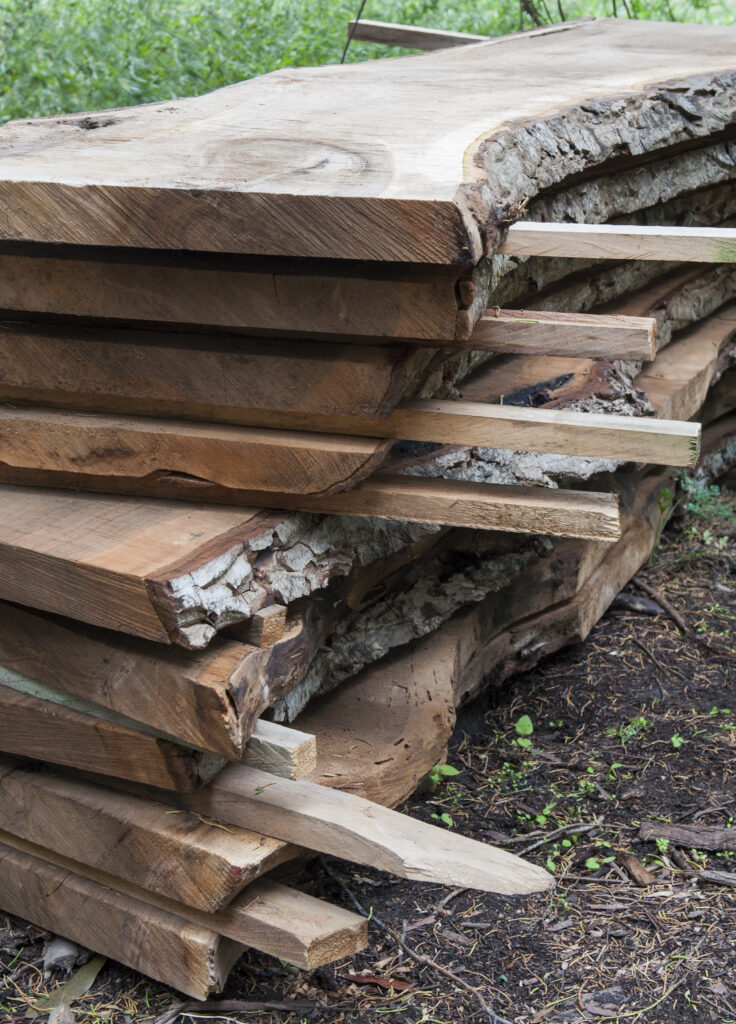
Interesting scrap timber
As well as milling private clients’ timber, he keeps his eye out for unwanted trees, windfalls and standing dead trees to mill into slabs to sell. “DIY people love it,” he says. Wood destined for the firewood heap is often the most interesting. “Logs with a bend in them make fantastic natural bar leaners,” he says. “I cut 10 out of two big pine logs that were otherwise worthless and sold them all to the Woolston pub.”
Dave has also been called on by people who have lost trees or had to abandon their properties after the Christchurch earthquakes. “I’ve done a few trees in the red zone. People like to take something away with them and use it in their rebuild,” he says. “One lady approached me about a walnut tree the family had grown up with that had been wrecked in the quakes. I milled it up and she was over the moon. She had platter boards made for their daughters as keepsakes and her husband even got a 20-litre bucket of sawdust out of it to smoke his fish. If that’s not sustainable I don’t know what is.”
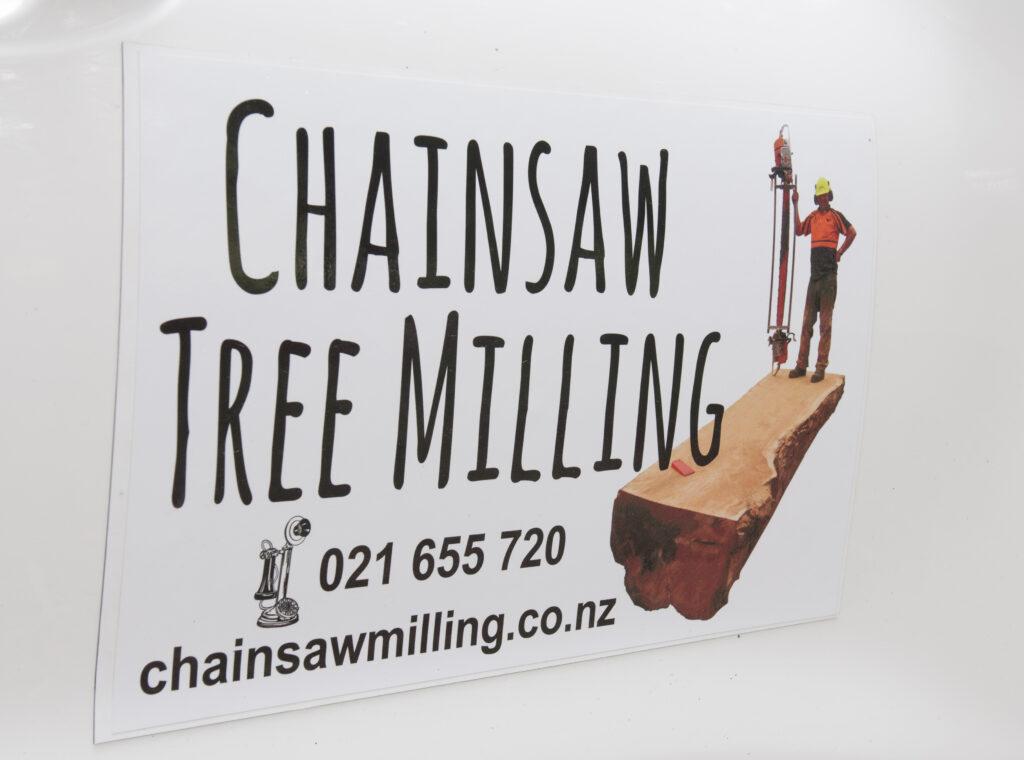
Chainsaw chronicle
The prototype of today’s chainsaw was a hand-operated device used for cutting bone by doctors in the late 18th century. A handle connected to a sprocket wheel turned the serrated chain.
In 1905, Samuel Bens, from California, patented the “endless chain saw” (a chain of links carrying saw teeth and running in a guide frame) as a means to fell giant redwoods.
The first portable chainsaw was developed in 1918 by Canadian millwright James Shand.
In 1926, Andreas Stihl patented a 116-pound electric two-man saw.
One year later, Emil Lerp, founder of Dolmar, mass-produced the world’s first gasoline-powered chainsaw, the “Type A” saw which weighed 125lb (56kg).
McCulloch started to produce chainsaws in 1948. The early models were two-man contraptions with long bars, often so heavy they had wheels.
